The glass disk game
The Endeavour 2025-03-26
The glass disk game is played on a grid. You have translucent colored glass disks you can either place on a vertex or an edge.
There are two kinds of disks that can be placed on a vertex: red or white.
There are two kinds of disks that can be placed on an edge: blue or yellow.
A vertex with a red and white disk looks pink. A vertex with a blue and yellow disk looks green.
The following rules tell you how you are allowed to add disks.
Rule 1
If you have this configuration
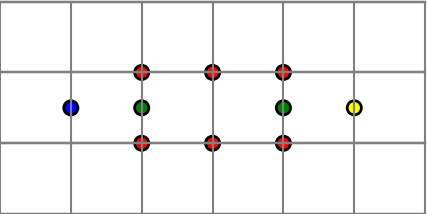
then you may add a green disk in the middle.
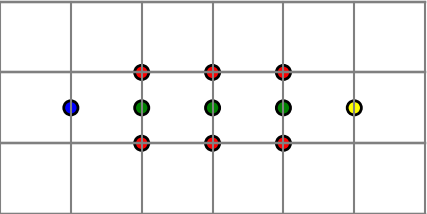
Mnemonic: Think of copying the blue and yellow dots on the end and placing them both in the middle.
Rule 2
If you have this configuration
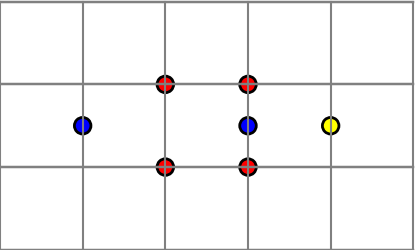
you may add a blue disk between the two blue disks.
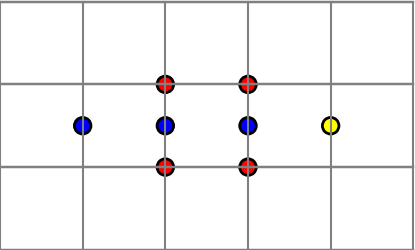
If you have this configuration
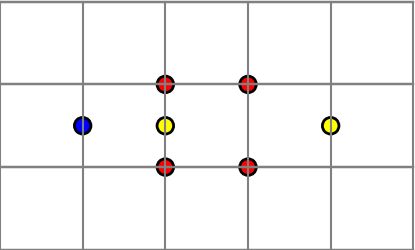
you may add a yellow disk between the two yellow disks.
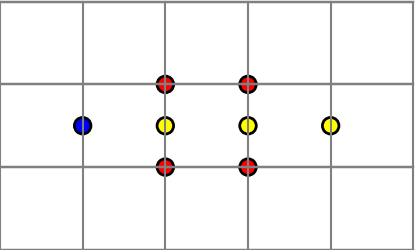
Rule 3
If you have a 3 × 3 grid of a white row on top and two pink rows below

or a white row on bottom and two pink rows above

then you may add red disks, turning the white row pink.

Rule 4
You can flip the board across the diagonal that runs NW to SE if you replace red disks with white disks and vice versa. For example, if you find a 3 × 3 grid with a white column on the outside and two pink columns, you can turn the white column pink.

Interpretation
The rules above are all the rules of the game. You do not need to know any mathematics to play the game.
But the game does have a mathematical interpretation. The grid is a commutative diagram. A red disk means the horizontal diagram is exact at that vertex, i.e. the image of the function coming in from the left is the kernel of the function going out to the right. A white disk means the vertical diagram is exact at that point.
A blue disk means a function is surjective (onto) and a yellow disk means a function is injective (one-to-one).
The diagram need not represent sets and functions. It could represent objects in a category along with morphisms. In that case blue disks represent epimorphisms and yellow disks monomorphisms.
Rule 1 is known as the five lemma. Rule 2 is called the four lemma. Rule 3 is called the nine lemma.
The glass disk game is a list of theorems in algebraic topology, or more generally homological algebra.
The post The glass disk game first appeared on John D. Cook.